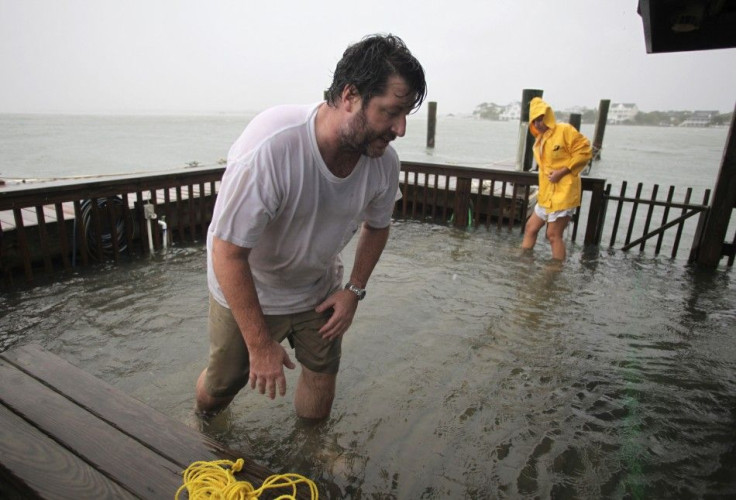Irene Hits North Carolina as It Moves Up East Coast

Hurricane Irene howled ashore in North Carolina on Saturday on a path that triggered evacuations in New York and threatened the densely populated East Coast with flooding and power outages.
New York City ordered unprecedented evacuations and transit shutdowns as states from the Carolinas to Maine declared emergencies due to Irene, whose 520 mile width guaranteed a stormy weekend for tens of millions of people.
With winds of 85 miles per hour (140 km per hour), Irene had weakened to a Category 1 hurricane on the five-step Saffir-Simpson intensity scale, but forecasters and officials warned that it remained large and dangerous.
New York Mayor Michael Bloomberg sternly told New Yorkers that Irene was still a life-threatening storm and urged them to heed evacuation orders.
Staying behind is dangerous, staying behind is foolish and it's against the law, Bloomberg said at a media briefing at Coney Island in Brooklyn.
Some 370,000 city residents are under orders to leave their homes in low-lying areas, many of them in parts of the boroughs of Brooklyn and Queens and in downtown Manhattan, he said.
New York's mass transit system, which carries 8.5 million people on weekdays, was to shut down at around midday on Saturday.
The eye of the storm crossed the North Carolina coast near Cape Lookout around 7:30 a.m. EDT, forecasters at the U.S. National Hurricane Center said.
Irene was moving north-northeast along the coast and was expected to remain a hurricane as it hit the mid-Atlantic states on Saturday night and New England on Sunday.
On the North Carolina coast, winds howled through the power lines, rain fell in sheets and streets were flooded or littered with signs and tree branches. In the port city of Wilmington, the air was filled with the sound of pine trees cracking.
You look outside and it's like nature is dancing for us, said Joe Toledo, who left his mobile home with his wife Cindy to take shelter in a hotel in Havelock, North Carolina.
One unidentified man in the Wilmington area was washed away and feared to have drowned, emergency workers said. Another man died of a heart attack while trying to board up his house, North Carolina Governor Bev Perdue said.
Hundreds of thousands of people were without electricity, power and water systems were damaged and there could be a major hit to tobacco crops, poultry and livestock, Perdue said.
We feel very hopeful that we have avoided a huge slap, she told MSNBC television, noting the storm had weakened below what was predicted two days ago. However, Perdue said, We're going to have millions of dollars of property damage.
MORE THAN A MILLION EVACUATE
More than a million people were ordered to evacuate from Irene's path, many of them cutting short their summer vacations as they fled beach towns and resort islands. Supermarkets and hardware stores were inundated with people stocking up on food, water, flashlights, batteries, generators and other supplies.
Our number of customers has tripled in the last day or two as people actually said 'Wow, this thing is going to happen,' said Jack Gurnon, owner of a hardware store in Boston.
Airlines canceled nearly 7,000 flights over the weekend and all three New York area airports were to close to incoming flights at noon on Saturday.
President Barack Obama said the storm could be extremely dangerous and costly for a nation that recalls the destruction in 2005 from Hurricane Katrina, which swamped New Orleans, killed up to 1,800 people and caused $80 billion in damage.
Irene was the first hurricane to hit the U.S. mainland since Ike pounded Texas in 2008.
Defense Secretary Leon Panetta said the military stood ready to help, with more than 100,000 National Guard forces available if needed in eastern states.
In Washington, Irene forced the postponement of a ceremony on Sunday to dedicate a new memorial to civil rights leader Martin Luther King Jr. Tens of thousands of people, including Obama, had been expected to attend.
Flooding from Irene killed at least one person in Puerto Rico and two in the Dominican Republic.
© Copyright Thomson Reuters 2024. All rights reserved.











